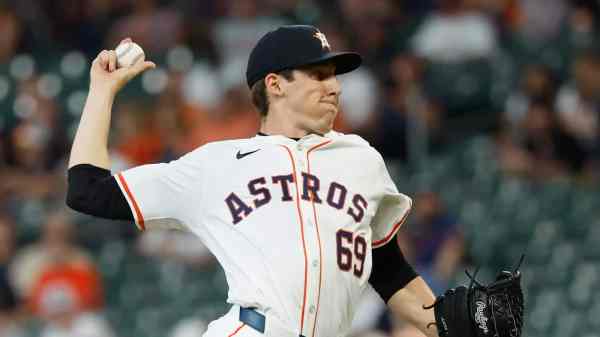The offseason leading up to the 2022 season was a pivotal one for the Astros.
Following a World Series defeat to the Braves, the team faced a major roster question at shortstop. Despite efforts to re-sign Carlos Correa, he ultimately chose to sign with another team. As a result, rookie Jeremy Peña seized the opportunity and earned a spot on the big-league roster out of Spring Training.
Peña had an impressive rookie campaign at age 24, batting .253 with 22 home runs and showcasing elite defense, ultimately compiling 5.0 WAR. He elevated his performance even further in the postseason, hitting .345 with 4 home runs over 13 games and earning World Series MVP honors as the Astros “finished the job” in 2022.
Over the past couple of years, Peña has been a reliable shortstop for the Astros. However, the offensive growth typically expected with more experience hasn’t quite materialized. In 2023 and 2024, he posted OPS figures of .705 and .701, respectively—both lower than what he achieved during his rookie season.
Fast forward to this off-season, and Peña taking the next step was going to be massive for the Astros. They would have to count on the bat more than ever with the loss of Alex Bregman and the trade of Kyle Tucker.
Now about two months into the season, Peña has been able to make improvements unlike anything he has done before in his big league career. Let’s look at some numbers:
One thing that plagued Peña in his earlier years was the strikeouts. For 2025, he is striking out a career low 13.3%. His strikeout percentage has continued to drop going from 24.2% in 2022, 20.3% in 2023 and 17.1% in 2024. He has also posted a 6.1% walk rate, which is second best in his career only to the 6.8% he had in 2023. That equals out to a career high 0.46 BB/K rate.
Chasing pitches out of the zone was another concern for him. He has made great improvements in 2025 though. This year, Peña has career low 33.1% swing percentage at pitchers outside of the zone. This is down from 37.0% last year. Not only is he swinging at less pitches outside the zone, he is also contacting a career high 54.1% of pitches outside of the zone. His rookie year he was at 43.7%. Lastly, his swinging strike percent is at a career low 10.5%, down from 15.7% as a rookie.
But making contact is only one part of the equation. The level of contact is equally important. His average exit velocity is at a career high 88.3 MPH. He is also posting a career high HardHit%, which is balls hit over 95 MPH, at 41.7%. He also has the highest line drive percentage of his career.
All these numbers mean nothing if they don’t produce hits and runs. Fortunately, he is having his best statistical season of his career. Peña has posted a career high 144 OPS+, compared to just a 98 OPS+ for his first three seasons. He leads the Astros in hits and doubles and is second in home runs and runs batted in.
About a month into the season, Espada made a change in the lineup putting Peña in the leadoff spot. He has responded in a big way with the moving slashing .366/.417/.570 with 23 runs batted in over 35 games.
As expected his defense has continued to be above average, ranking 3rd in the AL in outs above average for shortstops.
Sitting at 34-28, the Astros have relied heavily on Peña this season. Once a promising rookie, he has now become a key part of the team’s veteran core and even a potential MVP candidate to this point. His contributions have been instrumental to the Astros’ success in 2025, and his continued strong performance will be vital as they push for another playoff run.
Be sure to follow on Twitter, @AstrosFuture, follow me on Instagram, @AstrosFuture and like my Facebook page, facebook.com/AstrosFuture.
















